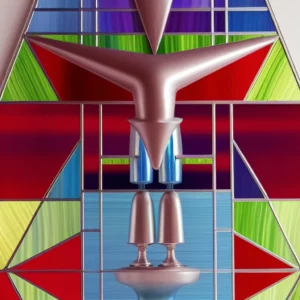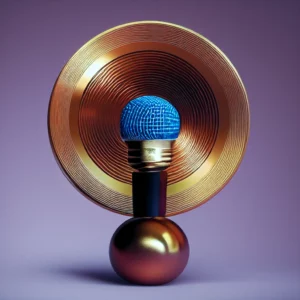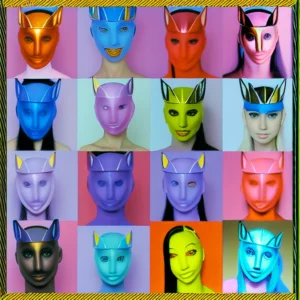One Week in Paris
Here’s an update after my first week of being an American in Paris.
Notre Dame
On Tuesday Rachelle and I visited Notre Dame on Île de la Cité, including climbing the stairs all the way to the top and saying hi to the gargoyles.
I found Notre Dame to be truly impressive, especially the inside of the main church, which is ringed by smaller chapels. And the views up top are spectacular, well worth the climb, especially the panoramic views from the very top of the tower.
We saw one of the huge bells in the tower, which originally took 16 men to ring it. We were there right at noon, so we got to hear the bells ringing from the top of the structure.
While exploring Notre Dame, I chatted with some fellow Americans (from Kentucky) about what else they enjoyed in the city. Whenever I hear people speaking English in Paris, it’s easy to strike up a conversation with them just by asking, “Where are you guys from?” Next week I may try using more playful openers, like saying in a fake French accent, “Oh no… not more Americans in our city!”
When we explored the main part of the church, I said to Rachelle, “This would be an awesome place to hold a workshop.” 🙂
It was amusing to learn that our visit was timed 666 years after the church was completed. Notre Dame towers above the surrounding area today, but imagine how imposing it must have seemed when it was first built. It sure took a long time to build though — about 180 years.
Louvre
We spent all of Wednesday exploring the Louvre till they closed at 9:30pm, and we only got through 60-70% of it. It’s an enormous palace, the former home of French royalty.
When we arrived at the Louvre, there was a huge line at the main entrance, with hundreds of people wrapping around the pyramid, so we opted to use the “secret” side entrance that our landlord told us about, which is on the southwest part of the Denon wing. It’s really easy to miss it because it’s narrow and practically hidden, with just a small Entrée sign to mark it. We breezed through the deserted security checkpoint and bought tickets from the automated machines there, and then we strolled into the museum proper — no lines at all. Even if we had bought tickets from the tellers, there were less than 20 people in line. So thanks a bunch to our landlord for saving us from those long lines. I love getting these kinds of tips from locals when traveling.
I found many of the Louvre’s rooms at least as impressive as the artwork within them. The decorations and details are just amazing. I think my neck is still sore from gazing up at so many ceilings.
The Mona Lisa was underwhelming. She’s small, encased behind glass, and surrounded by a railing, then a roped off area to keep you at a healthy distance. The room was also ridiculously crowded, with lots of people pressing through the mosh pit to take photos. I never got closer than 20 feet. At the time I felt that Leonardo would probably find the whole thing rather silly.
I also found the pyramid a bit cheesy. I keep mistakenly referring to the Louvre as the Luxor since it reminds me of the pyramid-shaped casino in Vegas. The Louvre pyramid is tiny by comparison though.
My favorite parts of the museum include the Greek statues and the French and Italian paintings. The sheer volume of art there is overwhelming, but many pieces seduce you into spending more time with them, which isn’t such a bad thing when your feet need a break. By the end of the day, I felt like my brain’s visual circuits were overloaded and needed a break. Fortunately my colorblindness gives me some added protection.
If we have time, we may go back again and finish off the rest of the Louvre next week. We saw everything in the Denon wing and most of the Sully, but we still have the whole Richelieu wing left (all four floors). It would be easy to spend another day there, and for a 10€ admission price, it’s one of the best bargains in town.
I took some art history classes in high school and college, and now I realize just how worthless that part of my education was. One day at the Louvre is far more educational and a lot more inspiring than sitting in a classroom discussing reprints.
The Louvre is truly a wondrous place, and I highly recommend that you see it at least once in your lifetime. Just walking through it is a growth experience. Expect to do a LOT of walking though since it’s such a huge place. Our feet were pretty sore by the end of the day.
St. Chapelle
Today we briefly visited St. Chapelle, formerly a royal chapel on Île de la Cité. Actually it’s 2 chapels, one on top of the other, with the upper chapel boasting some amazing stained glass windows that are a few stories tall. Each set of windows represents a book from the Bible or a segment from Jesus’ life, and you read them from bottom to top. The windows were so tall though that we couldn’t really make out anything near the top.
St. Chapelle hosts concerts, and we’re considering attending one. They’re performing some Vivaldi, who’s one of my favorite composers.
How to Become Parisian in One Hour
A couple nights ago we say a play called “How to Become Parisian in One Hour”. It’s a one-man show, produced and performed by Olivier Giraud. I loved it and thought it was hysterical. The audience was mostly French, but the show is performed mostly in English with some French phrases used here and there.
Based on the stereotypes presented in this play, I think he could have just as easily titled it, “How to Become a New Yorker in One Hour”, but I haven’t interacted with Parisians enough to determine to what degree those stereotypes are accurate. We were able to relate to a good bit of it though, even though we’d only been in Paris a few days when we saw the play.
If you live in Paris and understand English, do try to treat yourself to a performance of this show. It will be performed 4-5 nights per week through the end of the year, and then he goes on tour to the USA and Canada.
Despite the stereotypes, I haven’t had any problems getting along with Parisians. They do seem to rush about like New Yorkers much of the time, and I suspect many of them are over-stressed, but they seem friendly and communicative when I try to interact with them (although my interactions have been pretty limited thus far). If I do get an eyeroll or a Parisian “ffff” now and then, it’s not a big deal to me though — it’s just part of the learning process. Smiling and the liberal use of merci, pardon, and s‘il vous plaît go a long way towards smoothing over any blunders.
There is one odd thing I’m still trying to figure out. I’ve noticed that many people on the street (mostly Parisian I think) will make eye contact and hold it for a second or two as they walk past me. This has happened often enough that it got my attention, since it’s not something I’d normally see in a major USA city, especially one like NYC where people tend to avoid eye contact with strangers on the street. I don’t know if they’re looking at me because I stand out, or if it’s just a cultural difference, or maybe I’m just noticing it more because I’m looking around at them so much. I asked Rachelle if she observed anything along these lines, and she said she noticed it too. Their gazes usually look friendly, but I swear it feels like they’re communicating something subconsciously, and I’m not sure what it is yet.
Eating Vegan in Paris
Finding vegan food has been fairly easy (thanks to Happy Cow), so we haven’t had any difficulties there. There aren’t many 100% vegan restaurants in town, but there are lots of vegetarian restaurants that serve vegan items, which tend to be well marked on their menus.
I’ve really enjoyed the food here so far. Many of the vegan dishes appear to be rooted in macrobiotic cuisine, similar to what’s served at Real Food Daily in L.A. I appreciate the Parisian presentation style, which makes each meal look like edible art. I even had some delicious vegan crème brûlée for dessert.
Based on a recommendation, earlier today we tried the Berthillon sorbetto on Île de St. Louis (one of the little islands in the middle of the Seine, just across from Île de la Cité which houses Notre Dame). It was 5€ for 3 small scoops (about $7). We had pêche (peach), fraise (strawberry), and poire (pear) flavors. They were all really tasty. There are many more dairy-free flavors, so we may go back to try some of the others. I was quite proud of myself for understanding what each flavor was when the vendor rattled them off in French. He corrected us, however, when we asked for the scoops in a cup because we mistakenly said un tasse. In case you didn’t know, we should have said une tasse since cups are feminine — obviously!
The only food item in Paris that has been underwhelming so far has been the coffee drinks. I’ve had some soy lattes at different places here, and each time I was barely able to taste the coffee in it. Even Starbucks’ drinks are weaker here. I’m not sure if they’re using half the espresso or doing over-extracted long (lungo) pulls or recycling previously used beans or what. But the result tastes like a hot soy milk with a tablespoon of espresso. How does one order a French soy latte to make it taste like its American counterpart?
The food in Paris is a bit more expensive compared to what I’m used to paying in the USA, but it’s not as much as it seems at first glance. Since you don’t tip here — well, you can tip an extra euro or two if you really want to, but it’s not considered a faux pas if you don’t — and tax is already included in the price, the price you see on the menu is the price you end up paying. This also makes it easier to split the bill with someone since no one has to do percentages to figure out their share of the tax and tip.
So far the service everywhere has been consistently slow. At first I considered this a negative (slothful and inefficient), but my attitude has shifted during the past week. Now I understand that restaurant meals aren’t something you rush through in Paris. It’s expected that you’ll take your time. Instead of the waiters being slow and inattentive, you could also say they’re giving you space to enjoy your meal without being interrupted. If I want to eat quickly because I need to go somewhere afterwards, then it can be annoying to have to flag down a missing waiter to bring the check (is he even in the restaurant right now?), but if it’s a leisurely dinner where I want to linger, then the Parisian style is fine since there’s no pressure to pay and get out fast.
Coining the Euro
One thing I don’t like about the euro-based cash is that there are so many coins to deal with. In the USA we have only 4 types of coins in common circulation — pennies, nickels, dimes, and quarters. Yes, there are silver dollars and half-dollars, but they aren’t commonly used, and you’ll rarely receive them as change from a merchant.
But here they have coins that are worth 0.01, 0.02, 0.05, 0.10, 0.20, 0.50, 1.00, and 2.00 € — 8 different kinds. And all of them appear to be commonly used. Why so many denominations? Honestly this seems a bit over the top.
The end result is that if you spend cash throughout the day here, you end up with a lot of extra coins to carry. The 1€ and 2€ coins quickly pile up. At least they’re smaller in size than the Canadian loonies and toonies. I miss paper $1 bills though. 🙂
Perhaps their thinking was that coins are more durable for the most frequently used denominations. The euro bills are thinner and probably a lot less durable that U.S. bills, so a 1€ bill might be lighter and more convenient, but it probably wouldn’t last long with frequent usage.
The euro bills are also different sizes in width and in height. The more the bill is worth, the bigger it is. This seemed odd to me at first, but the size variations make it easy to flip through your wallet to see what you have, or to quickly select / insert a particular bill.
Get Some Restrooms
The lack of good public restrooms in Paris reminds me of New York City. They tend to be hard to find, small, crowded, and dirty. Some also charge 0.50€ to use them (about $0.70), such as the one on the west side of the Jardin des Tuileries (a huge park next to the Louvre). And just like NYC, merchants often have signs that say their restrooms are for customers only.
Even inside the Louvre, the bathrooms can be difficult to find. Some of them were closed while we were there. We’d see 20+ women waiting in line for a restroom with only 2 stalls. This is pretty much the opposite of what I’m accustomed to in Las Vegas. How can they build the Louvre but not build enough restrooms? Perhaps Parisians are just better at holding it.
Fortunately it rained a lot today, so the city smells a lot better now. This was the first day I didn’t smell any urine while walking around.
Since Las Vegas doesn’t get a lot of rain, they build more restrooms so people don’t pee on buildings as much. Paris seems to rely on weather patterns to freshen things up.
Personally I prefer Vegas’ approach. I’d rather not see people peeing on the walls of the Louvre. And Vegas never had the plague.
Avoiding Traffic Death
The aggressive Parisian driving also reminds me so much of NYC. As pedestrians cross the street, drivers seem to stop quickly at the last second, as if to intentionally scare people. Then the cars creep forward as if to pressure les pietons to get out of their way ASAP. Like… how dare we cross in front of them when they’re in a hurry to get to work?
The walk / don’t walk signals in Paris are pretty low quality compared to the ones in the USA. The lights are smaller and dimmer, so in bright sunlight it’s often hard to tell whether it’s red or green. I’m colorblind of course, but Rachelle isn’t, and she has a hard time telling sometimes too. The same goes for the locals. I’ve learned by watching the Parisians that in such situations, the proper action is to take a deep breath and then move fast — if the cars seem like they’re restlessly waiting for the light to change.
There’s no flashing don’t walk signal here. The signal abruptly changes from solid green to solid red. There is a short grace period after the signal turns red, but you can’t tell how long it is. You have to look sideways at the other lights to see when you’re about to get killed.
Moreover, if the street crossing has multiple segments, like if there’s a center island in the street, the walk signals sometimes change at different times for each segment. So you often have to pause in the middle, waiting for the light to change halfway so you can finish crossing.
Also, with the crazy intersections, sometimes you have to remember to look six different ways while crossing the street, just to be sure you aren’t about to be nailed by a speeding motorcycle, scooter, bicycle… or some dude trying to sell you a miniature Eiffel Tower.
One thing that makes it challenging to navigate the streets of Paris is that some of the streets change names often. Rachelle and I took a different route home, and none of the street names were familiar to us. I was looking for a certain street (rue Berger) and ended up having to use the force to recognize when we reached it, since it didn’t carry the same name a few blocks over. Fortunately my Jedi powers were accurate, so we correctly turned onto Rue Berger’s namesake.
Miscellaneous Observations
Paris lives up to its reputation as a very romantic city. We see people spontaneously making out all over the place. Today we even saw pigeons having sex in public — twice in two different locations! Unfortunately one of them later pooped on my leg while I was sitting on a bench in the park behind Notre Dame. So if you ever see such a sight in Paris, take my advice and limit yourself to a glance, but give the birds some privacy.
French pigeons seem different than the ones I’m used to seeing in the USA. They look plumper and fluffier, and I swear that they strut around with a more arrogant attitude.
I’ve noticed that a lot of people here still read dead tree books as opposed to using e-readers, iPads, etc, especially in Paris’ many beautiful parks. I visited an enormous book/CD/DVD store here called Fnac, and there were tons of people there. It was more crowded than Borders Books during its going out of business sale. It was odd to see such a bristling store based on obsolescent media. I wonder how much longer they’ll be around.
I’m getting better at handling routine interactions entirely in French w/o resorting to English. Sometimes it takes me a few seconds to decipher what people say if I don’t know the words, but they seem to understand what I’m saying well enough. I can at least handle things like restaurant transactions, asking what time the museum closes, asking how much the bathroom costs, etc. And if I don’t know a particular word, I can politely ask a French-English speaker how to say it in French.
Some days I feel like I’m thinking mostly in French. Being here is such an immersive experience that it’s hard not to.
I think tomorrow we’ll explore the Musée d’Orsay. And next week I’m especially looking forward to visiting Versailles.
We’re still scouting for a meet-up location. We’ve received a few suggestions, but we haven’t checked them out yet.
I’m really enjoying this trip so far. Now that I’ve been here a full week, I feel a lot more functional, relaxed, and confident. I know how to get around town without getting lost, keep myself fed and watered, and even find bathrooms before exploding. Now when I see other tourists standing on street corners with their maps out, looking around in circles as they try to figure out where they are, I almost chuckle. It’s like looking back through a time warp of how I was on day one. Consequently, I’m expending less mental energy figuring out how to function here, and now I can focus more on soaking up and experiencing life in Paris.
And thank God it rained today! 😉




